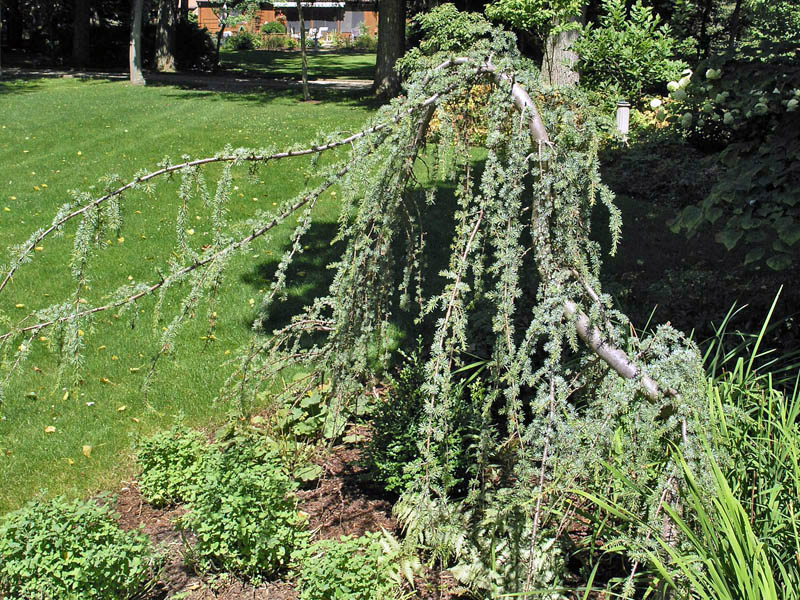| Shape | Weeping, somewhat pyramidal and informal. |
| Landscape | Specimen tree. |
| Propagation | Grafted. |
| Cultivation | Full sun and partial-shade. Well-drained and moist soils with a pH of acidic. Prefers loam soil. Drought tolerant. |
| Pests | Tip blight, root rot, black scale and deodar weevil may be a problem. |
| Notable Specimens | The Niagara Parks Botanical Gardens and School of Horticulture, Niagara Falls, Ontario, Canada. |
| Habitat | Horticultural origin. |
| Flower Description | Monecious, male cones very densely set, erect, finger-shaped, usually more numerous on lower portion of the tree. Female borne in stout and erect cones. |
| Fruit Description | Cones rather short, upright on upper side of branches, require 2 years to mature; glaucous green while developing. |
| Colour Description | Intense blue foliage, but prone to winter burn which gives it a brown colour. The female cones are greenish-purple in colour. Mature cones are brown. |
| Texture Description | Medium texture. |

